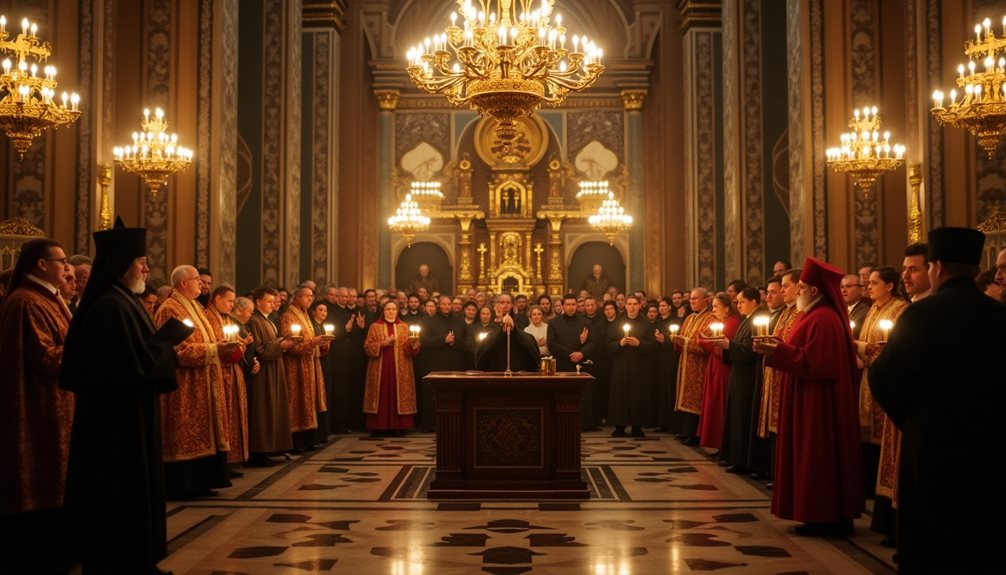Although The Nightingale (1936) is celebrated as the first full-length Soviet color feature, the journey toward color in Soviet cinema began much earlier. In the 1920s, filmmakers experimented with various colorization techniques, such as hand-painting individual frames. For instance, Sergei Eisenstein’s Battleship Potemkin (1925) featured a striking red flag, meticulously painted frame-by-frame by Eisenstein himself, marking an early, limited use of color to evoke emotion and symbolism in Soviet film.
Color Film in the USSR

During the 1930s, the Soviet Union developed its own color film technologies, independent of Western advancements. Early Soviet color films often used two-color systems, which could reproduce a limited palette, but by the late 1930s, inventors like Pavel Mershin had created a three-color system that allowed for a broader, more realistic range of hues. This technology was employed not only in live-action films but also extensively in animation, often utilizing the Bipack film technique. Producing color films in the USSR was a technically complex and resource-intensive process. It required specialized film stock, precise lighting, and meticulous planning. Due to limited access to Western technologies, Soviet filmmakers had to innovate domestically, often facing significant technical and logistical challenges. Restoring these early Soviet color films today is complicated, as original sources like Bipack films are difficult to project or digitize without loss of quality.
The Nightingale: Setting a Precedent
The Nightingale (1936), directed by Nikolai Ekk, marked a groundbreaking achievement as the first Soviet feature shot entirely in color. Filmed on location at a porcelain factory, the film showcased the potential of color to enhance storytelling and evoke emotional depth. Ekk’s meticulous approach to color cinematography set a new standard for Soviet filmmakers, inspiring subsequent experimentation and technological development. His innovative use of color demonstrated how it could be harnessed to tell more complex stories, and the vivid imagery captivated audiences with its visual splendor.
Expansion of Color Films in the Soviet Union
Following the success of The Nightingale, Soviet filmmakers continued to push the boundaries of color cinematography. The three-color system developed by Pavel Mershin gained widespread adoption, especially in the late 1930s and 1940s. Animated films, in particular, benefited from these advances, as the vibrant colors brought new life and visual richness to Soviet animation. By the early 1950s, the Soviet Union had become a global leader in color film production. In fact, it was the first major film-producing country to release more color features than black-and-white ones, reaching this milestone in 1951—three years ahead of the United States. This rapid transition was driven by both technological progress and the political desire to showcase Soviet modernity and technological prowess on the world stage.
Cultural and Political Context
The shift toward color filmmaking in the Soviet Union was not solely driven by artistic innovation; political motives played a significant role. Color films were seen as a means to demonstrate Soviet technological achievements and modernity, both domestically and internationally. The government invested heavily in developing indigenous color film technologies and supported ambitious projects that highlighted Soviet progress and ideology. This strategic use of color cinema helped reinforce the Soviet narrative of progress and strength.
Lasting Legacy
The pioneering efforts of directors like Nikolai Ekk and inventors such as Pavel Mershin left a lasting impact on Soviet cinema. Their innovations laid the groundwork for future technological and artistic advancements, enabling Soviet filmmakers to explore new visual and narrative possibilities. Today, restored Soviet color films provide a vivid window into the era’s culture, politics, and technological aspirations, continuing to inspire filmmakers and historians alike.
Conclusion
The transition to color in Soviet cinema was marked by a combination of technical ingenuity, artistic ambition, and political motivation. While The Nightingale stands as a significant milestone, it was part of a broader movement that saw the USSR emerge as a leader in color film production. The legacy of these early Soviet color films continues to be celebrated for their innovation and their pivotal role in shaping the visual language of cinema worldwide.




